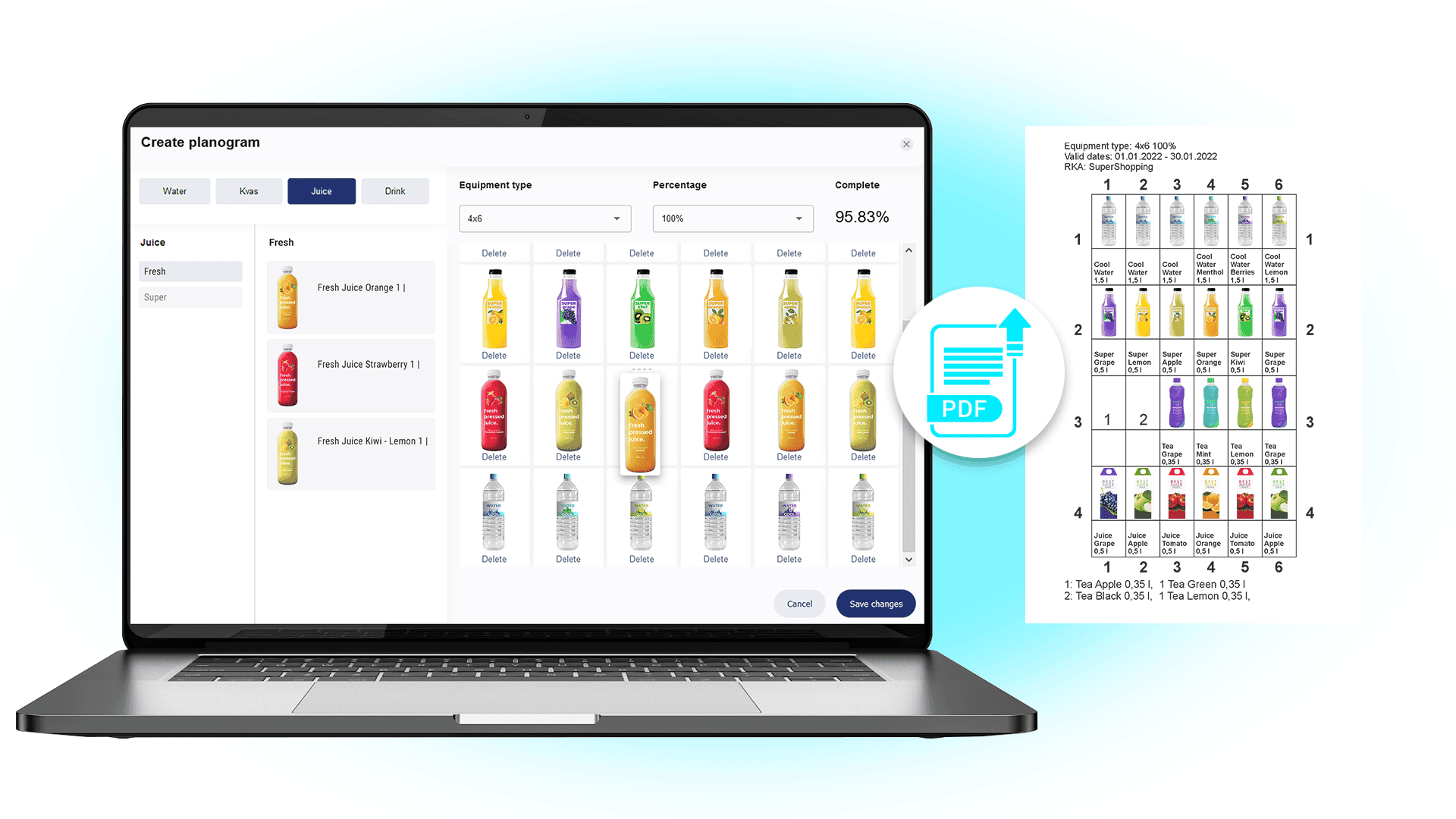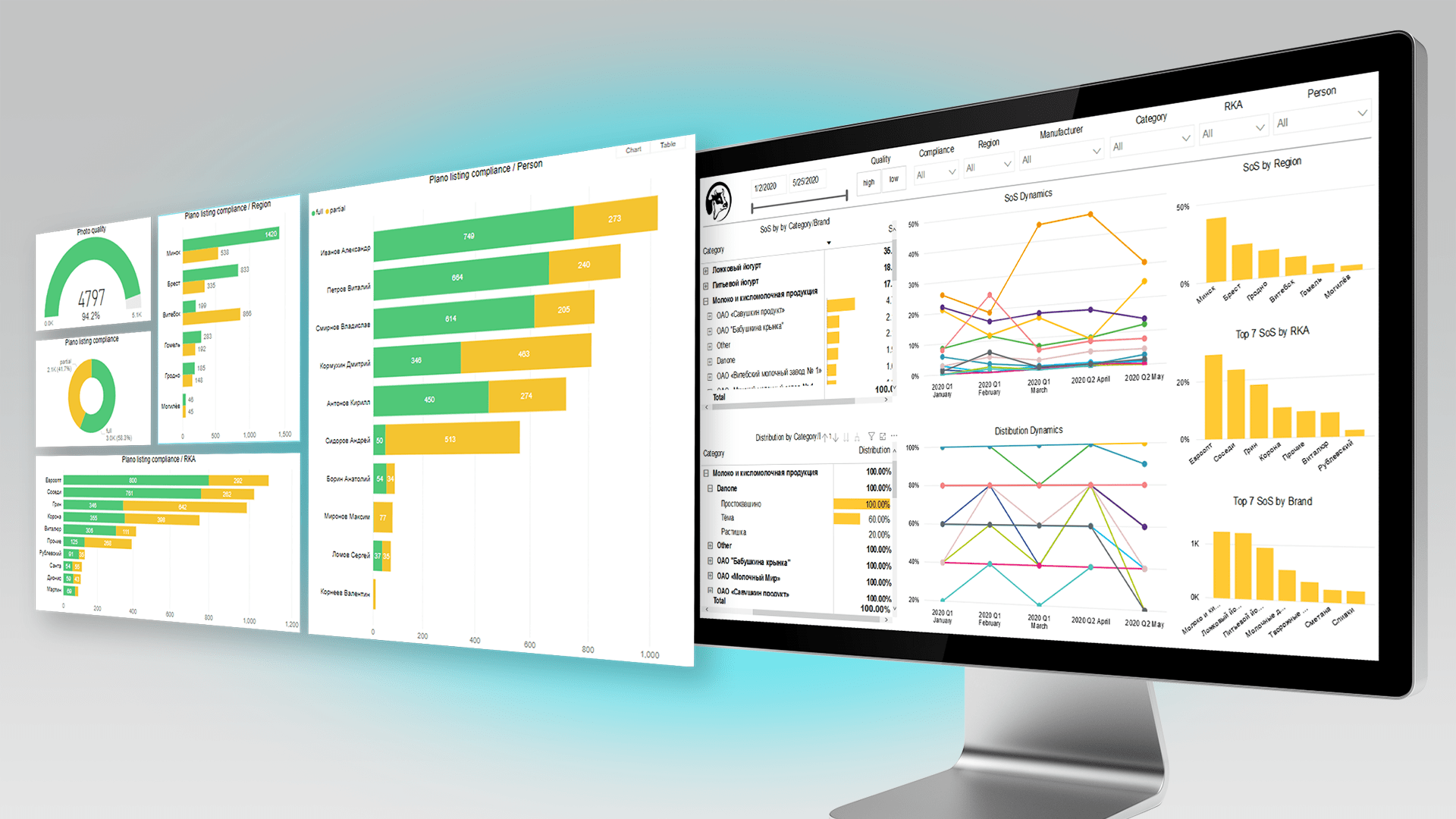Consumers are increasingly making up their minds about their purchases while in the store. Bread shopping usually ends with a full basket of corn flakes, a pack of promotional tea, biscuits and dumplings. The main objective of merchandising is to correctly position the goods and racks in the store so that the right products are eventually bought.
Mikhail Savitsky, Goods Checker Tech Lead at IBA Group IT company, helped us unlock merchandising secrets aimed at drawing consumers’ attention to certain brands or products on the market shelf.
Table of Сontents
Moment of Truth and Merchandising Secrets
The concept of Moment Of Truth (MOT) was coined by Jan Carlzon (CEO of SAS Airlines) about 40 years ago. “The Moment of Truth” refers to various points at which the consumer/customer’s idea of a particular company is shaped.
A quarter of a century later, Alan George Lafley (CEO of Procter & Gamble) expanded the concept and singled out the First Moment of Truth (FMOT). That is, the very first glance of the consumer at the product – on the shelf of the nearest supermarket, in TV advertising or on the banner when visiting the website.
The first impression is the most important. One of the objectives of merchandising is to make it bright, because a second first impression simply cannot exist. Merchandising implies showing all the best aspects of the product, some kind of elevator pitch, when the first 30 seconds of getting to know the product prove rather essential.

Two important tasks are assigned to the first insight into the product:
- sales promotion/growth;
- improving the image of the outlet.
Proper display of goods will help the buyer to easily navigate in the store, quickly find products “on the list”, while at the same time grabbing unplanned articles from the shelves.
Five Basic Rules of Merchandising
When arranging racks on the trading floor, rules are used to maintain sales volume and increase turnover for certain groups of goods. At the same time, the buyer does not realize that the store is literally manipulating him or her, offering to buy pasta or stew. There are 5 basic rules that large stores adhere to.
Rule 1. Golden Triangle
The Golden Triangle is considered the foundation of merchandising. Significant groups of goods, the cash desk and the entrance to the outlet should be located in different parts of the store.

Icons made by Pixel perfect from www.flaticon.com
For example, bread and dairy products are most in demand in the most common supermarket store. The buyer who came to buy a loaf of bread and yogurt passes through the entire trading floor. Looking at the shelves that come across along the way, the consumer recalls that sunflower oil and toilet paper have run out at home, and it would be nice to buy cotton swabs as well.
Rule 2. Large Number of Different Products in One Place
Large racks and pallets with a variety of goods seem to drop hints to the buyer that these products are now popular; they are exactly what the consumer needs. Store employees even remove a few pieces on purpose, showing that the goods are actually bought by others, and the new customer will not disturb the arrangement by taking something from the shelf and putting it into the basket.

Many stores make use of this rule when displaying seasonal or holiday (like Easter) merchandise. Typically, this layout is placed immediately near the entrance to the trading floor.
Rule 3. Product Compatibility
The store strives to remind the customers what items can still be purchased with the product they came for. Usually compatible products are placed close to each other. For example, by March 8, a shelf stand with sweets and cosmetic sets can be arranged. Chilled meat comes close to skewers and lighter fluid, as well as seasonings. Patés and cold cuts are successfully placed next to cheeses.

One of the new concepts of SWAS (store-within-a-store) fits into this rule for displaying goods – brand compatibility. It got a lot of play in Europe and the USA. The store leases part of its trading floor to a partner brand. As a result, store visitors purchase goods from the tenant brand, and buyers who come to buy the brand’s products replenish their stocks from the shelves of the landlord store.
Rule 4. Driver Rule: the Strong Pull the Weak
Analysis of goods display in the store shows that the products of a little-known brand are rarely popular. But it is worth placing it near a popular brand, as the buyer may catch sight of and even buy a previously unknown product.
Rule 5. Goods at Eye Level
The shopper’s gaze travels across the rack from the top left corner, undulating down. It’s kind of like flipping through a book. A person looks at products located at eye level and a little lower for the longest time. To attract the attention of the buyer, the desired product shall be placed within this area, because most likely the consumer will not spend much time on purchases and will put items caught by his eye into the basket.

Statistics and image: https://moluch.ru/
Neighborhood stores are now numerous. A person chooses the one where it is easier for him or her to find a product, read the price tag and more pleasant to walk around the trading floor. Otherwise, the buyer heads to the competitor’s store.
Merchandising has a significant impact on a store’s profits. If the management of the outlet does not analyze the display of goods, then profit will be lost. It is worth keeping track of what is sold the most, where and how the products are placed, and also what will changes in the location of the product result in.
Goods Display Analysis: How to Speed Up the Process
 Merchandisers must take photos of the result of their work and send them to the manager to evaluate the performance (KPIs). The problem is that up to several hundred or even thousands of photos can arrive per day – the manager does not always have time to process each photo. Photos remain unused in the memory of a PC or server. As a consequence, marketers don’t always see the big picture.
Trading companies have long begun to use automated tools for processing information / photos. One such tool is Goods Checker.
Goods Checker assists in merchandising automation: it allows managers to quickly create and edit product layouts, set routes for merchandisers, monitor planogram compliance, and generate detailed analytics.
1. Creating planograms. Goods Checker allows creating and editing planograms. For example, a planogram for 100-200 items can be generated in just a couple of minutes. It is also easy to adjust it by simply moving the selected product on the virtual merchandise shelf.
Merchandisers must take photos of the result of their work and send them to the manager to evaluate the performance (KPIs). The problem is that up to several hundred or even thousands of photos can arrive per day – the manager does not always have time to process each photo. Photos remain unused in the memory of a PC or server. As a consequence, marketers don’t always see the big picture.
Trading companies have long begun to use automated tools for processing information / photos. One such tool is Goods Checker.
Goods Checker assists in merchandising automation: it allows managers to quickly create and edit product layouts, set routes for merchandisers, monitor planogram compliance, and generate detailed analytics.
1. Creating planograms. Goods Checker allows creating and editing planograms. For example, a planogram for 100-200 items can be generated in just a couple of minutes. It is also easy to adjust it by simply moving the selected product on the virtual merchandise shelf.
 2. Field operations. The application allows managers to create assignments for field employees at the outlet. Merchandisers can tag the completed assignments in a personal to-do-list. They can also check the correspondence of the layout to the planogram in a real-time environment.
2. Field operations. The application allows managers to create assignments for field employees at the outlet. Merchandisers can tag the completed assignments in a personal to-do-list. They can also check the correspondence of the layout to the planogram in a real-time environment.
 3. Planogram check. Goods Checker is able to analyze the photos coming from the merchandiser. AI checks the photos and compares the actual display of goods on the photo against the planogram. Goods Checker will show gaps on the shelves or product mismatch by weight. The merchandiser can immediately enter the reason for deviation from the planogram: out of stock, equipment breakdown, etc.
3. Planogram check. Goods Checker is able to analyze the photos coming from the merchandiser. AI checks the photos and compares the actual display of goods on the photo against the planogram. Goods Checker will show gaps on the shelves or product mismatch by weight. The merchandiser can immediately enter the reason for deviation from the planogram: out of stock, equipment breakdown, etc.
 4. Analytics. Goods Checker provides timely and detailed store reporting and product display analysis. This allows to quickly determine the effectiveness of the chosen strategy and the employee’s KPIs.
4. Analytics. Goods Checker provides timely and detailed store reporting and product display analysis. This allows to quickly determine the effectiveness of the chosen strategy and the employee’s KPIs.

Smart Merchandising Is the Cornerstone of Profit
Consumers spend, on average, a few percent more money in stores where the display of goods is done properly and merchandising is sophisticated. Here the product is easier to see, remember and buy. Management of the outlet shall understand that one should not rely only on the location of the shelves in the store. It is also important to fill the shelves, provide background music, light, ensure good order and smell.
Automated solutions significantly speed up many business processes. Goods Checker is a great option for any stores, which completely removes the human factor when analyzing data, makes detailed analytics for designated indicators and increases the quality of the information received.
The use of such software helps to meet the KPI plan and identify ways to increase sales.




